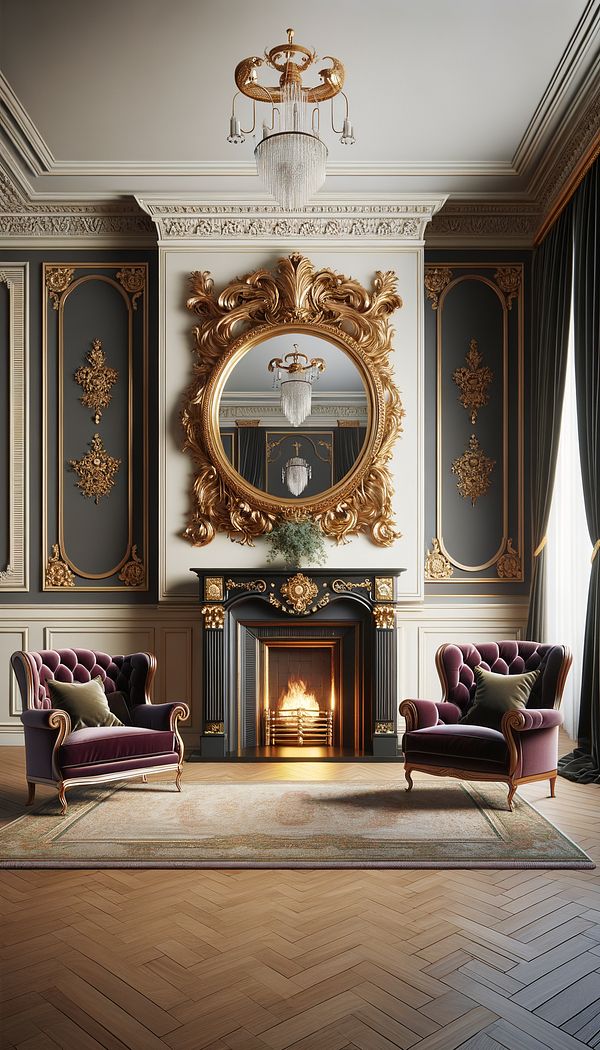What is Regency?
Regency refers to a style of interior design characterized by elegance, refinement, and an emphasis on symmetry and geometric shapes.
Description
Regency style is an iconic interior design movement that originated during the Regency period in early 19th century England, specifically between 1811 and 1820. This style is highly influenced by the classical architecture of ancient Greece and Rome, which is evident in its use of columns, pilasters, and friezes. It also heavily incorporates elements of neoclassicism, making it a unique blend that exudes elegance and sophistication.
The hallmark of Regency style is its emphasis on proportion, symmetry, and a restrained approach to ornamentation. Furniture pieces are often made of dark woods like mahogany or rosewood, and are characterized by their sleek lines and minimal ornamentation. The use of metals such as brass, gold, and iron for decorative purposes is also quite common. Upholstery in this style tends to feature rich, luxurious fabrics like velvet or silk, usually adorned with classical motifs or patterns such as stripes and Greek key designs.
In terms of color palette, Regency interiors often lean towards light and airy hues, with a preference for soft pastels and neutral tones. This is complemented by the strategic use of bold accents in artwork, rugs, and decorative objects to create a dynamic and visually appealing space. Chandeliers, candelabras, and other forms of ornate lighting play a key role in bringing this elegant aesthetic to life.
Usage
Regency style can be seen in various settings, including historical estates, upscale hotels, and private residences that seek to evoke a sense of opulence and historical charm. It is particularly favored in living rooms, dining rooms, and hallways where the grandeur of the style can be fully appreciated. Interior designers often blend elements of Regency with modern decor to create spaces that are both luxurious and functional.
FAQs
-
What era does the Regency style belong to?
The Regency style belongs to the early 19th century, specifically between 1811 and 1820, during the Regency period in England.
-
What are common features of Regency style furniture?
Regency style furniture typically features dark woods like mahogany, sleek lines, minimal ornamentation, and metals such as brass and gold for decorative accents.
-
How does color play a role in Regency style interiors?
Color in Regency style interiors often involves light and airy hues, soft pastels, and neutral tones with bold accents in artwork and decorative objects to create contrast and visual interest.
Practical Application
When incorporating the Regency style into your own space, start with furniture pieces that echo the era’s distinct elegance and simplicity. Opt for sleek, dark wood tables and chairs with minimal detailing. Enhance the space with luxurious fabrics and accent pieces featuring classical motifs. Consider adding a statement lighting fixture, like an ornate chandelier, to capture the style's sophisticated essence. Finally, balance the room with a light and neutral color palette, punctuated by strategic bold accents to achieve the distinctive Regency elegance.
-
Design Styles478 articles
-
Furniture Types599 articles
-
Decorative Techniques322 articles
-
Color & Patterns154 articles
-
Textiles & Upholstery252 articles
-
Floor PlanA floor plan is a scale drawing that presents the layout of a space from above.
-
Bistro TableA bistro table is a small table, typically round, designed for intimate dining or coffee for two.
-
Wabi-SabiWabi-sabi is a Japanese philosophy that finds beauty in imperfection and transience.
-
Refectory TableA long, narrow table designed originally for dining in monasteries and later adopted for use in domestic interiors.
-
SpecificationsSpecifications are detailed descriptions and guidelines for the execution and completion of design elements within a project.
